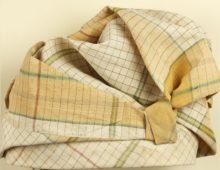What factors drove change in medical practice during the Age of Revolution? Enquiry focus 1
The kymograph
Suitable for students aged 14+
1. Watch
Ask students to watch the Kymograph video. Ask them to write down any important points about the development of medical practice in the period.
If you are watching with the students, pause the video to help them reflect on the questions below as well as considering the types of questions the historians are asking. Highlight the idea of ‘change’ in the study of this object and use it to reflect on previous studies of medical technology.
Can students answer the following questions?
- What was a Kymograph designed to do?
- How did the machine work?
- How did it mark a change from previous methods?
- What is important about the invention of the Kymograph?
2. Test
Students can try this multiple choice quiz to see how much they have remembered from the video. Students working at home can save their answers as a PDF and email them to teachers.
3. Research
Carl Ludwig had a varied career in medicine and physiology. Ask students to conduct some independent research on Carl Ludwig and produce a short (no more than 250 words) fact file on him. They could think about:
- His education
- Influences on his ideas
- The impact of his inventions.
Students could be encouraged to look at the conversations between scientists in different countries as part of this research and/or the ongoing development of machines such as the Kymograph.
4. Make connections
In the video the experts note that the Industrial revolution had a big impact on medical innovation in the Age of Revolution. Students could explore this further through objects from our Revolutionary collection such as:
For each object, they make notes about how it:
- Had an influence on people’s understanding of machinery and mechanisation
- Changed the lives that people led
- Made the invention of machines like the Kymograph possible.
Groups of students could be asked to explore different objects in the Impact of industry theme to develop a sense of the period.
5. Think
Students think about the rest of their studies on the History of Medicine. Are there any other examples they can think of (from any period) where advances in technology have also meant an advance in medical practice? In class this could be completed through paired or small group discussion. If students are studying at home they could be encouraged to use email or virtual chats to discuss these ideas.
6. Reflect
This enquiry focuses on influences on medical practice in the Age of Revolution and the causes of change. Students display their ideas using a Causation Diagram. They can structure the diagram in one of the ways shown here or think of their own idea. It should show:
- How different factors (e.g. industrialisation) had an influence on changing medical inventions and practices
- The processes they encouraged (e.g. mechanisation)
- The medical developments associated with these ideas (e.g. the kymograph and other recording machines).
Using everything they have learnt in this section, they use their diagram to show the influence of industrialisation on medical practice.
Students can continually update this diagram as they learn about different medical developments during the Age of Revolution. Encourage them to explore other objects from the Revolutionary Collection which interest them, to extend their knowledge and understanding of the period.
As students develop their diagrams of different causal factors, encourage them to consider different ways of showing links, highlighting key names and dates, and developing ideas for revision.
7. Extend
Students could read our blog post on the work being done with primary school children to bring the history of industrial impact to life using creative digital tools. Can they think of any other applications for this sort of technology to aid historical understanding? Students could develop their own ideas using projection or animation to bring history to life.
Try the other enquiries in the series
What factors drove change in medical practice during the Age of Revolution?
Enquiry focus 1 – The kymograph
Enquiry focus 2 – Anatomical research and Charles Bell
Enquiry focus 3 – Surgical instruments
Enquiry focus 4 – Early anaesthetics
Consolidate your thinking – Drivers for change in medical practice during the Age of Revolution
Was change in medical practice revolutionary or evolutionary during the Age of Revolution?
Enquiry focus 1 – Vaccination
Enquiry focus 2 – The Old Operating Theatre
Enquiry focus 3 – Phrenology
Enquiry focus 4 – The stethoscope
Consolidate your thinking – Change in medical practice during the Age of Revolution


